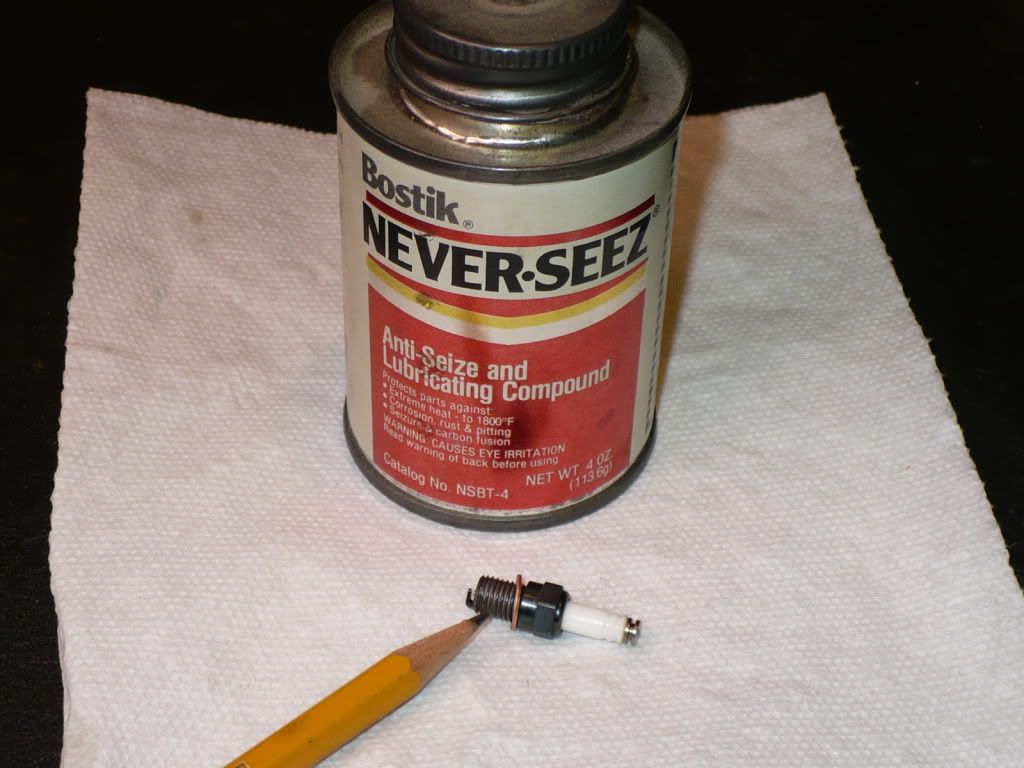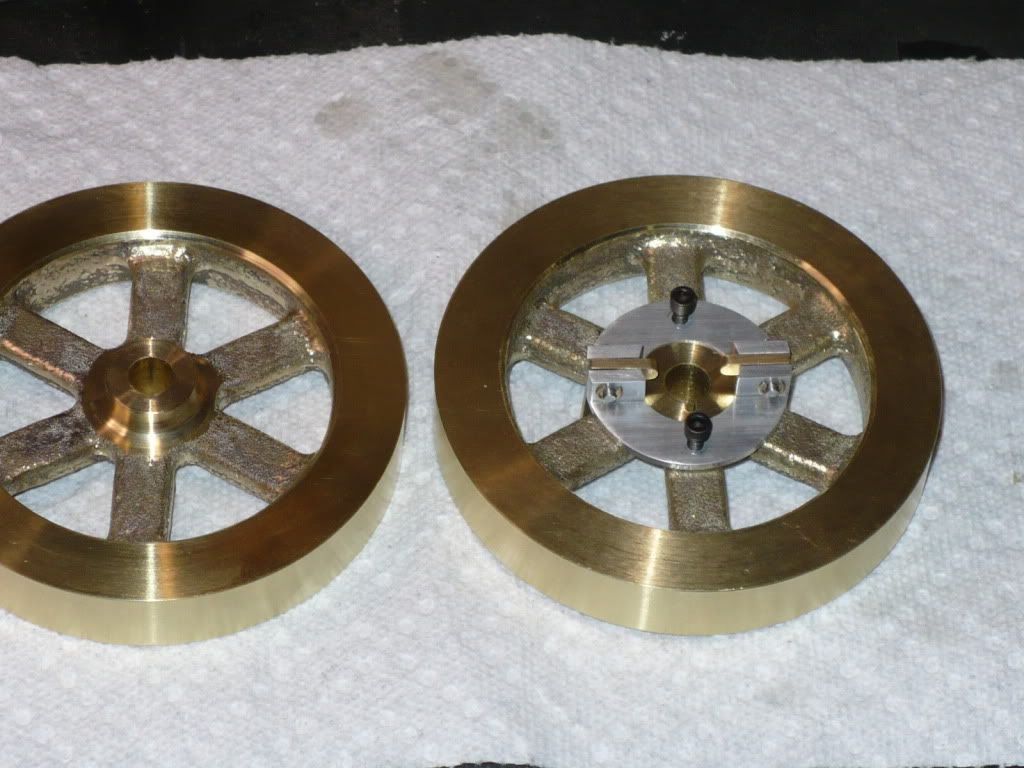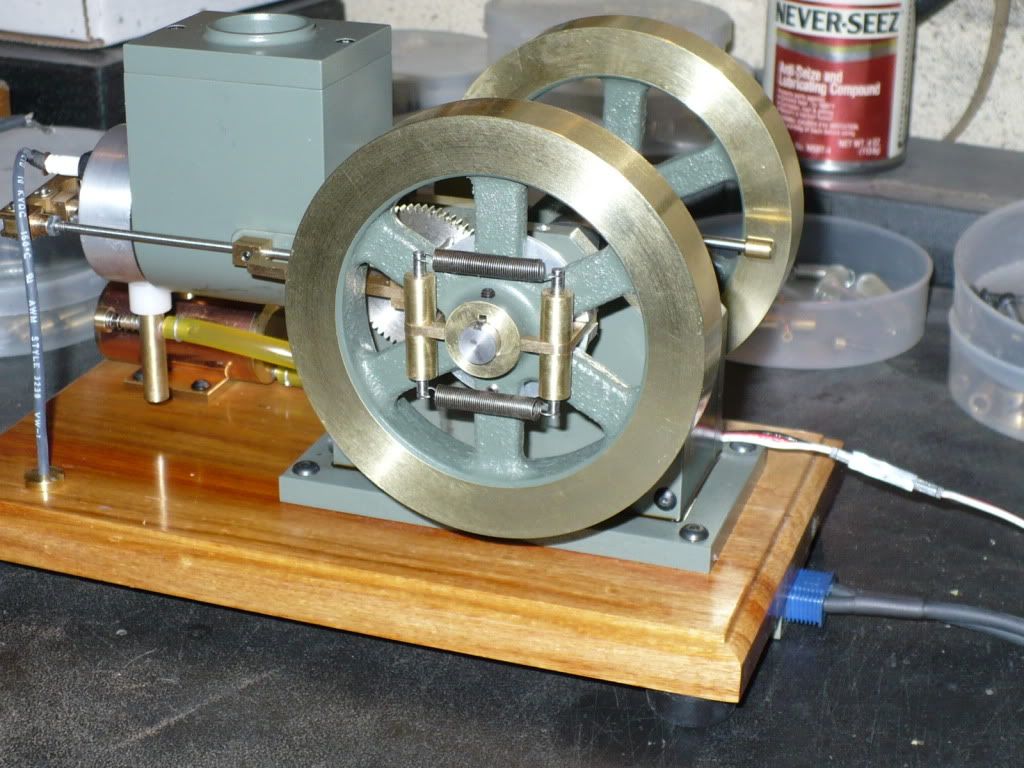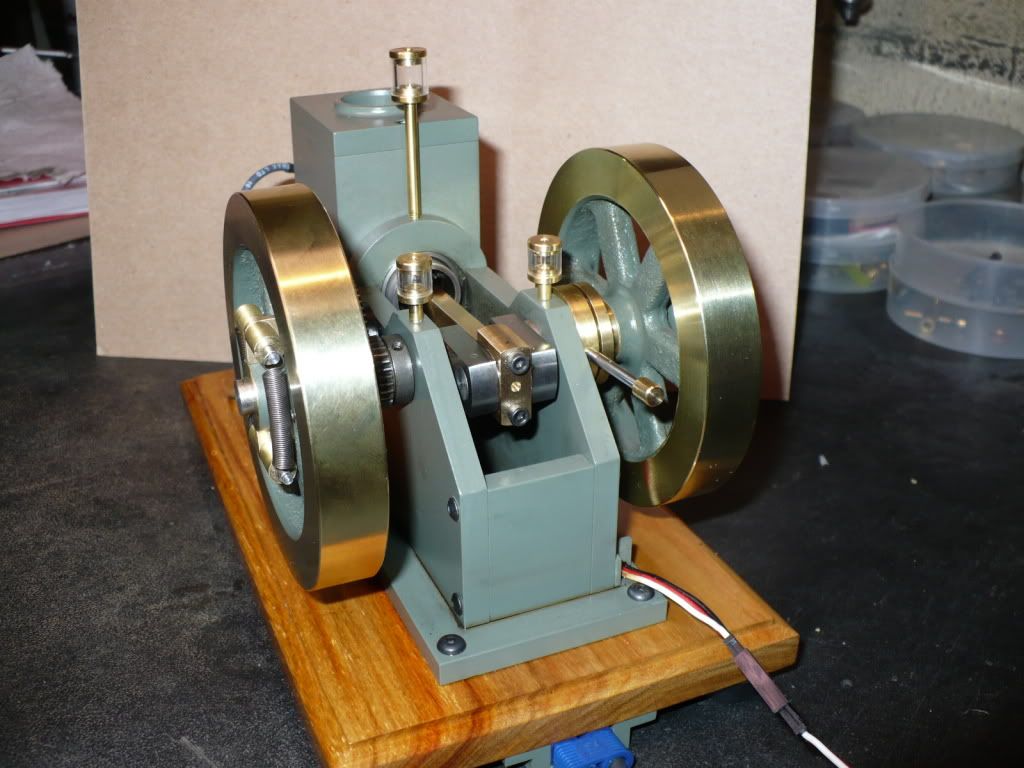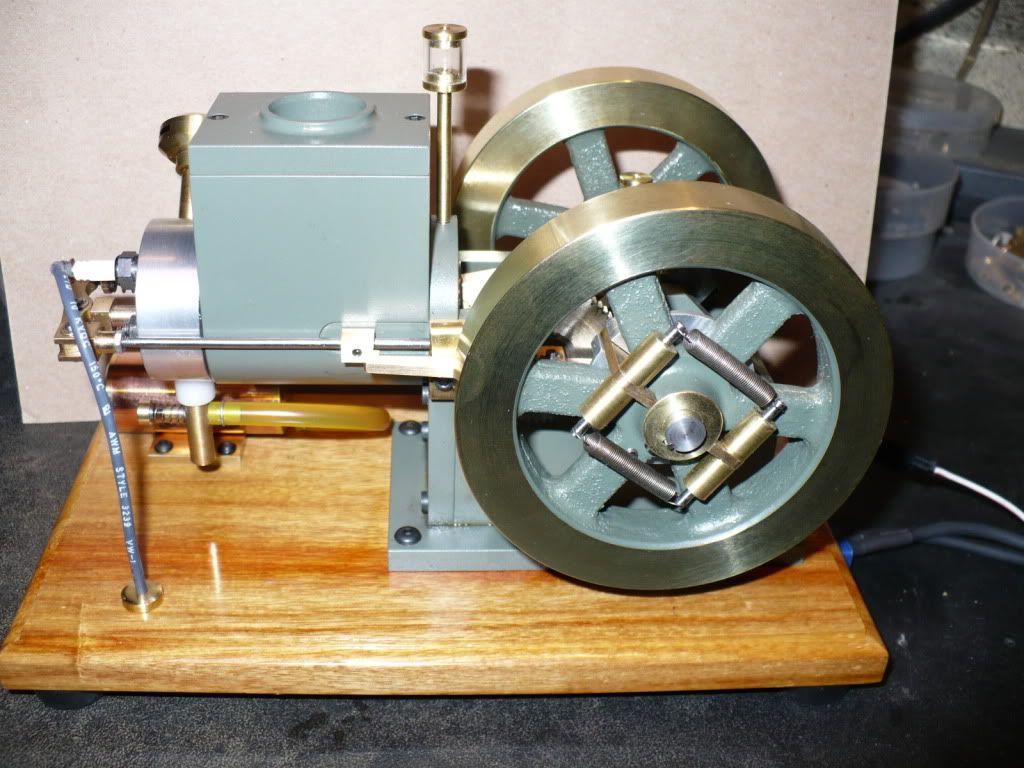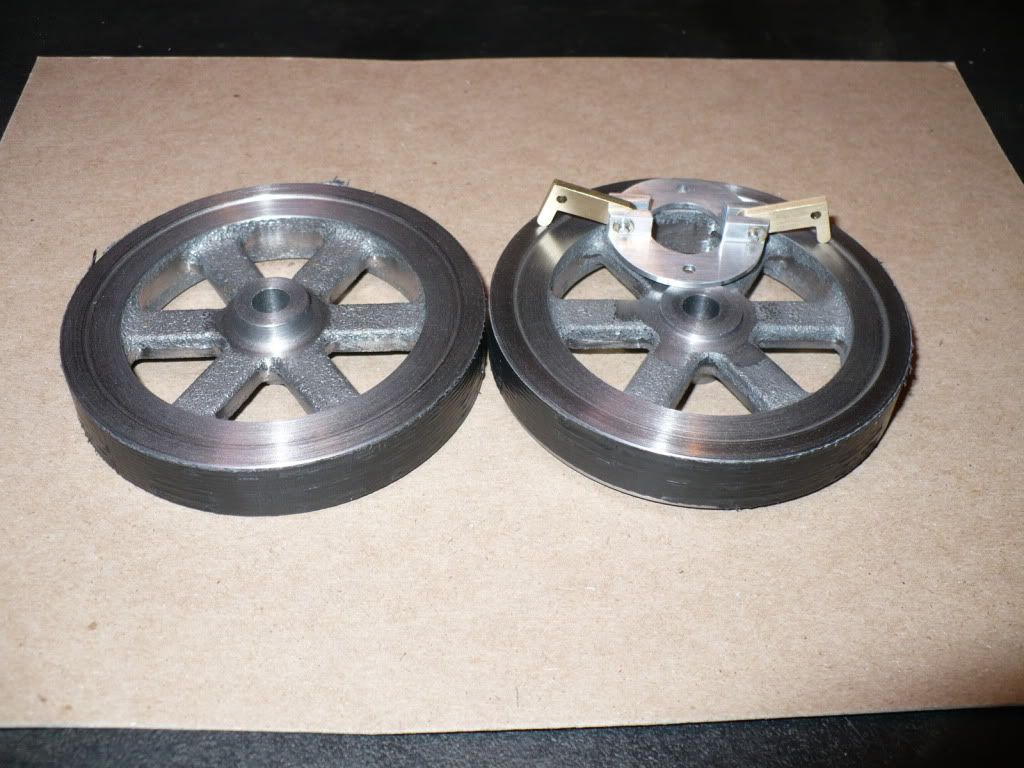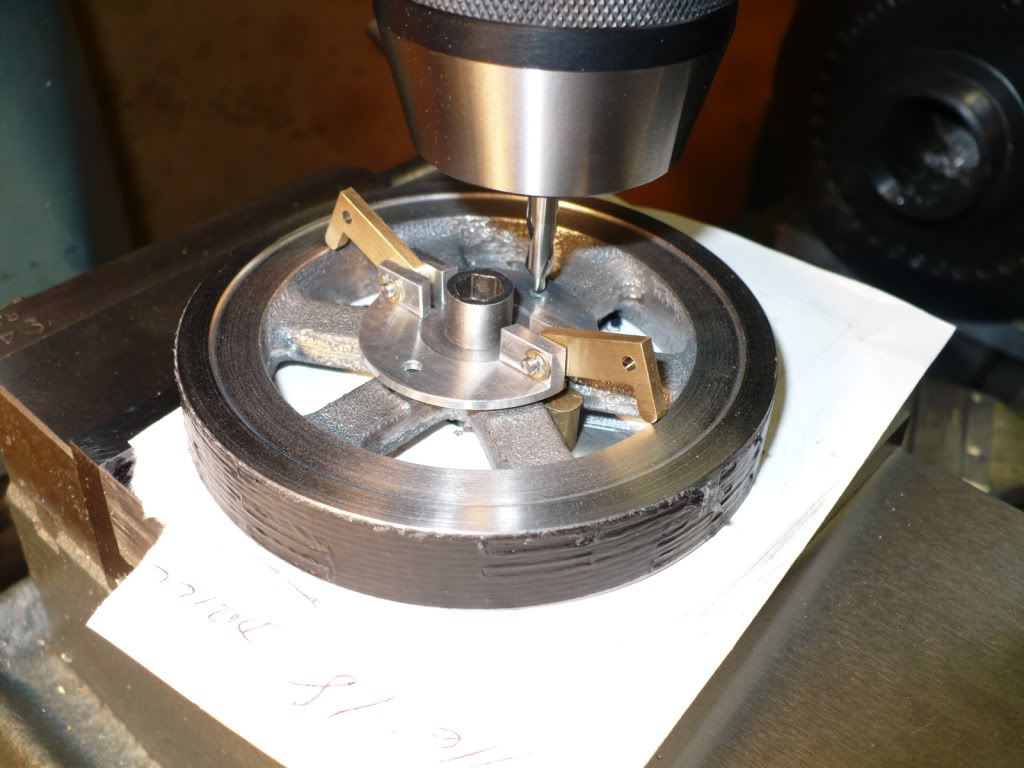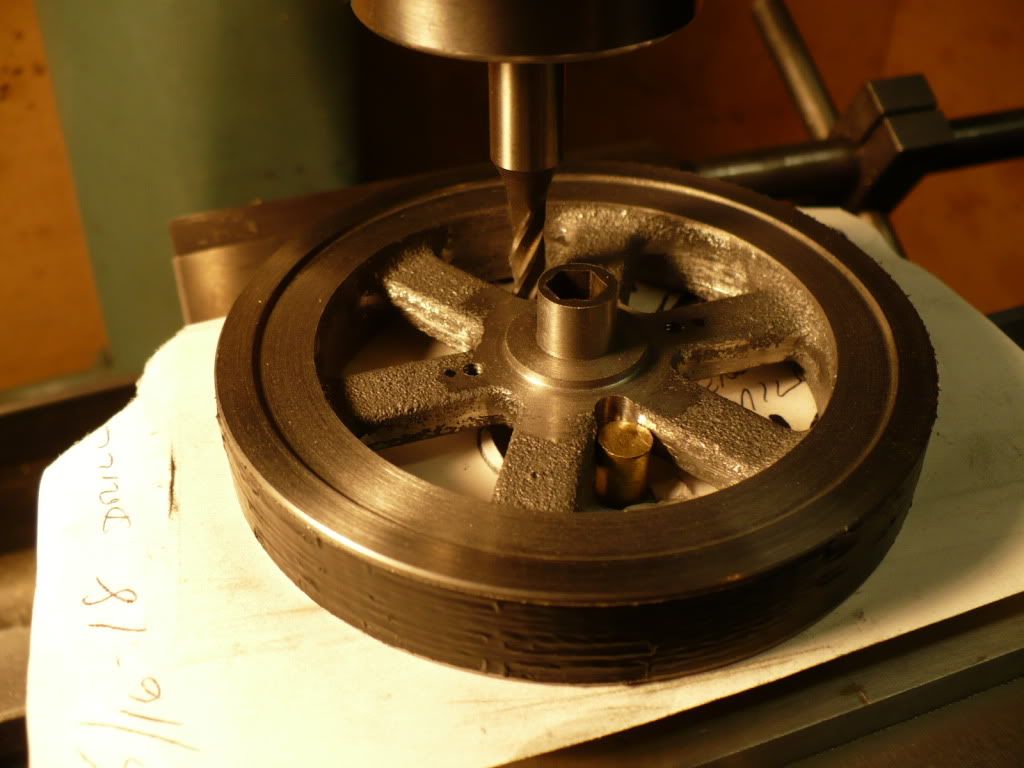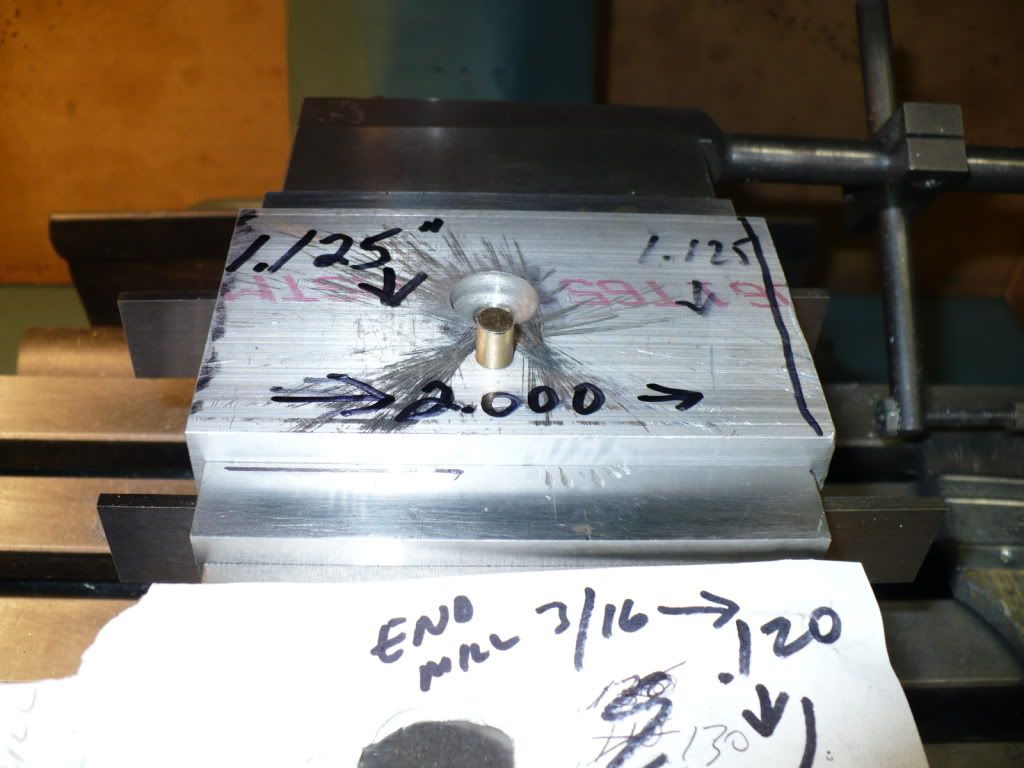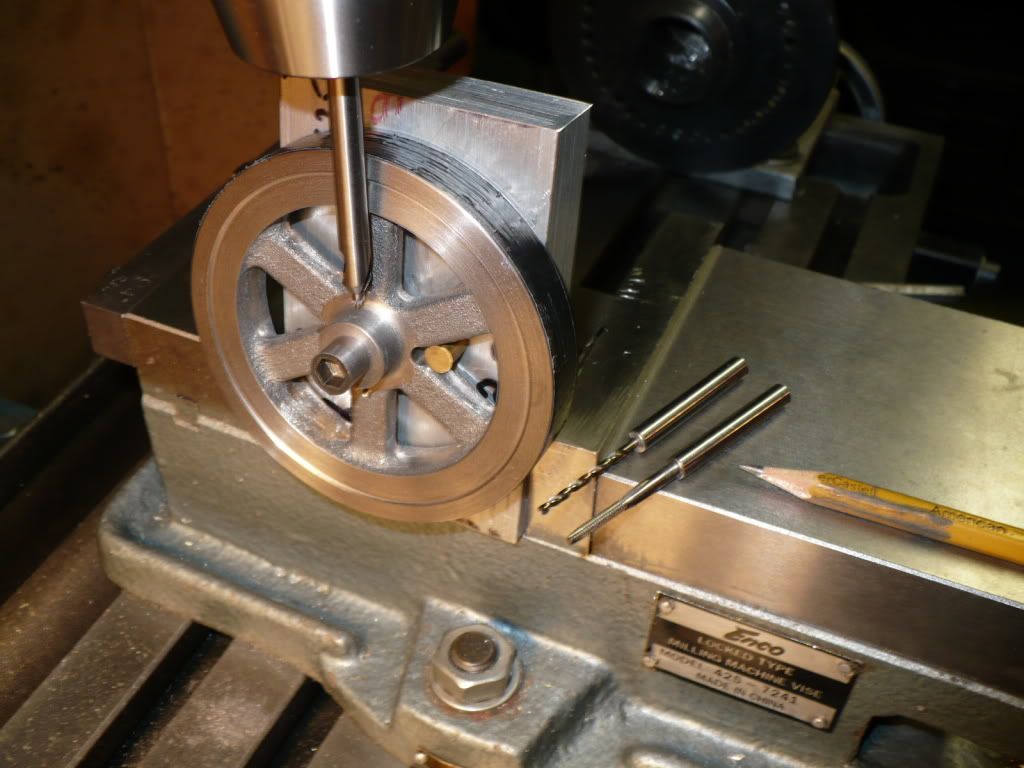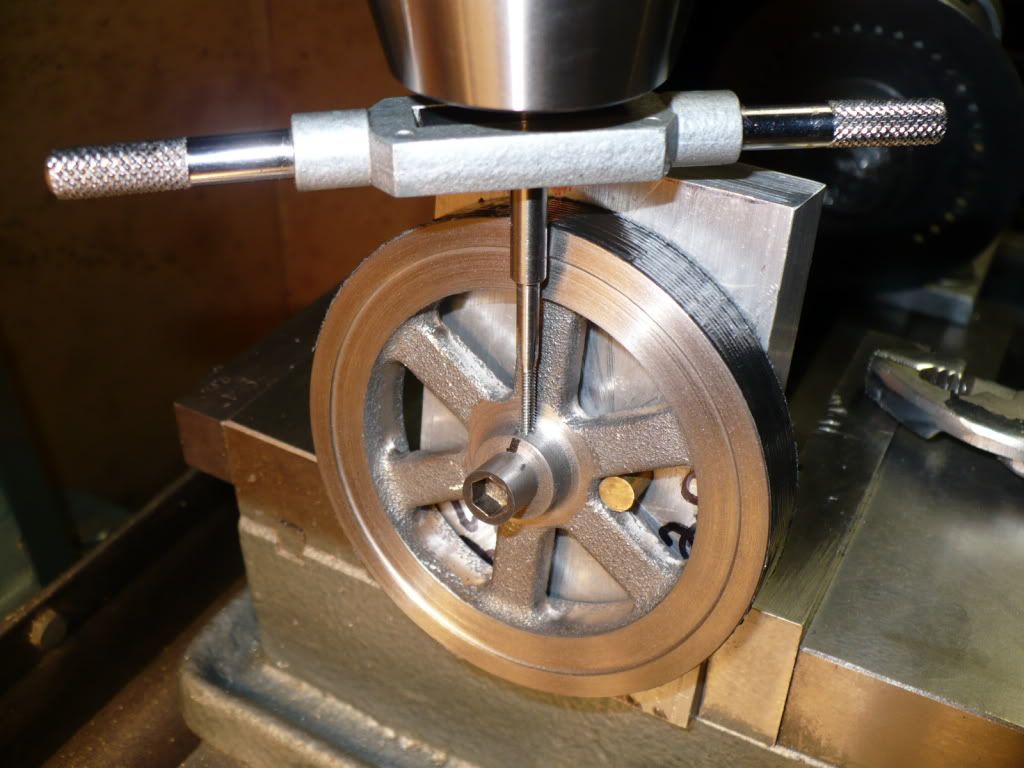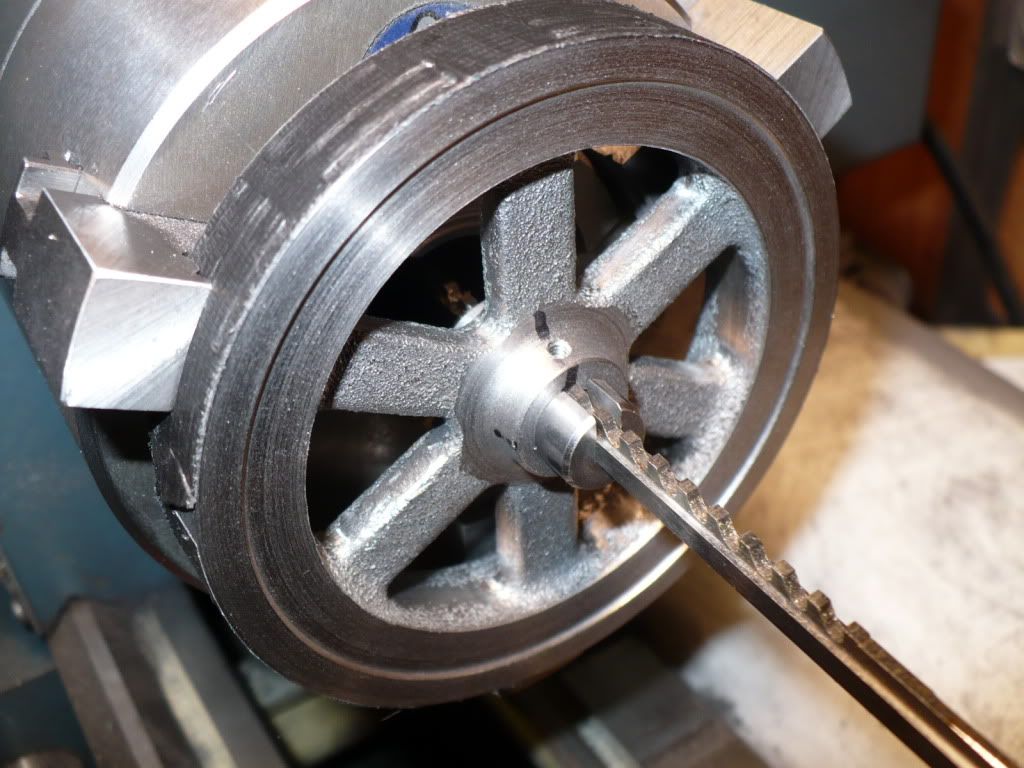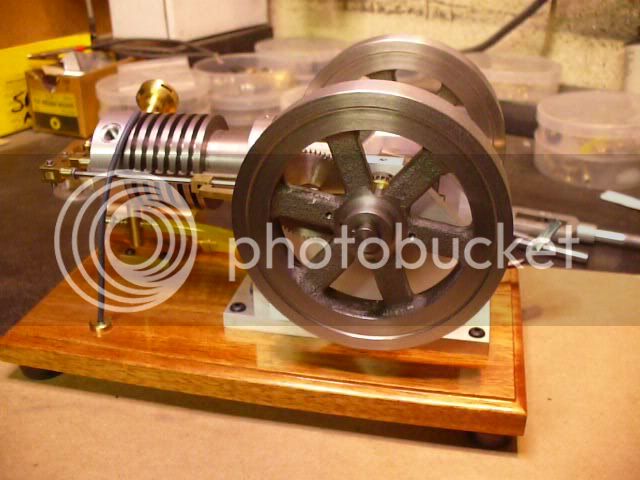#354 I finished up all the lathe work on the next two flywheels and added a stepped profile on the sides of the flywheels. They turned out well, and I'm very pleased. The outer edges of the rims were protected with a layer of black duct tape. Silver will work too!

#355 I mounted the flywheel in a fixture and shifted .531" off center to drill and tap the two 4-40 screw holes that will hold the carrier in place. This governor carrier is mounted on the inside of the flywheel used on the push rod side of the engine. I checked the location of the holes with the carrier in place just to verify before drilling.
#356 I used the same fixture and a 3/16" end mill to create a pocket for the arms on the carrier. After milling out the first pocket the flywheel was rotated 180* to mill the one on the other side. The arms are held in place with springs and rest on the outer .625" hub diameter when the engine is not running. The outside dimensions on the parts in this area are critical, and the plans proved to be correct.
#357 Here's the simple fixture I made. The brass pin was too tall and wouldn't allow a test fit of the carrier, so I 'fine tuned' it with a hack saw and file!
#358 Here the fixture is tilted over and rotated to do triple duty. It was used to center the flywheel bore to drill and tap it for a 4-40 set screw with out any fuss.
The pencil is pointing to the extensions I made for a #44 tap drill, and a 4-40 tap. An extension for a center drill could be made the same way. I simply drilled out some 7/32" rod and made the assembly permanent by using #609 Loctite. Making my own using this method was much quicker and less expensive than buying a pulley tap.
#359 Below I'm using my quick and dirty 'pulley tap'. With the hold down bolt going through the hub it interfered with the drilling. I drilled lightly till I could feel the drill just break through the flywheel hub and touch the bolt, and then I carefully tapped part way in, and finished up by hand tapping at the bench.
#360 I decided to broach the 1/16" key ways in the lathe. I chuck up a short piece of 1/2" brass round in the tail stock chuck and pushed the broach through by re-setting the tail stock a few times. It only took a few minutes and required less pressure that I normally use on drills over a quarter of an inch in diameter. Shamefully simple!
#361 The picture below shows were I'm at with build #2. My spark plugs and clips came in two days after ordering them, so that's what I'll start with tomorrow.
To paint, or not to paint, that is the question..... :noidea:
-MB





